Are you finding us from Worldcon?
Join us in Portal 55 (a great deal of DISCORD there…) for weekly broadcasts and perennial discussion!

by Gideon Marcus
Venus or Borscht
Just three days ago, the USSR launched its seventh probe to the second planet, continuing to run up the score against America in the exploration of that world.
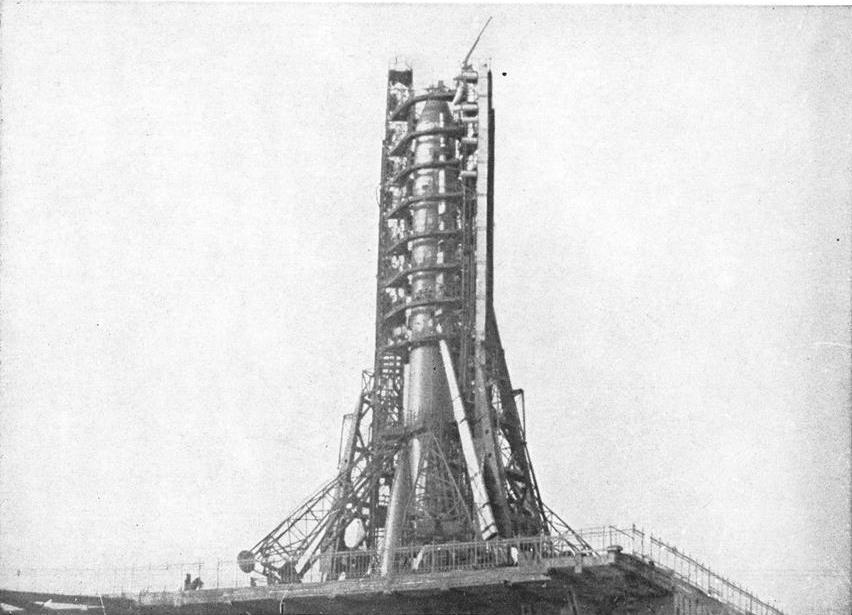
Venera 6 on the launchpad—presumably, Venera 7 was launched by a similar rocket
In four months, Venus 7 will complete its 217 million mile trip. Like its three predecessors, Venuses 5 and 6 and Venus 4, the seventh Venus probe is designed as a lander. Of course, there's a little dispute between the two superpowers as to whether any of the prior trio actually reached the surface. Several Western scientists contend that Venuses 4-6 all burned up on their way through the seething, hot atmosphere.
Perhaps Venus 7 will make it all the way down. It weighs 105 pounds more than its predecessors, tipping the scale to 2,596 pounds. Maybe some of that is armor or insulation. Either way, at least Venus 7 is safely on course, which is better than some of its predecessors. Many Soviet "Cosmos" satellites are suspected to have been would-be interplanetary probes whose rockets failed to refire once the craft reached Earth orbit.
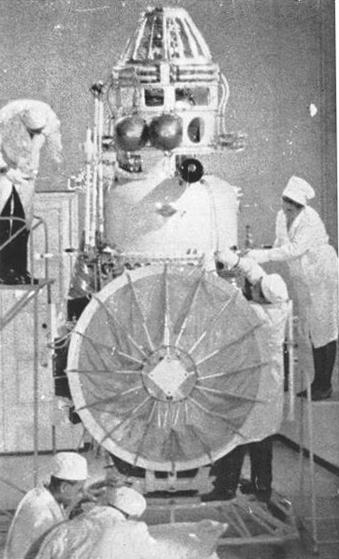
Engineers working on Venera 6 (we don't have pictures of Venera 7 yet)
Since Neil Armstrong first set foot on the lunar surface, the Soviets have maintained that they were never in the Moon Race, preferring, instead, to concentrate on exploring the planets and building space stations. Indeed, it's likely the Reds will put up a Venus 8 within the week, just as they sent Venuses 5 and 6 as twins last year. We've only managed two (highly successful) flybys so far.
Ad Venera per aspera. I don't care who explores the planets so long as I get to read the research results!
Summertime
The results are in, however, for the latest issue of F&SF. Plus, I've got a little surprise for you at the end. Let's see what the Ferman brothers have for us this month:
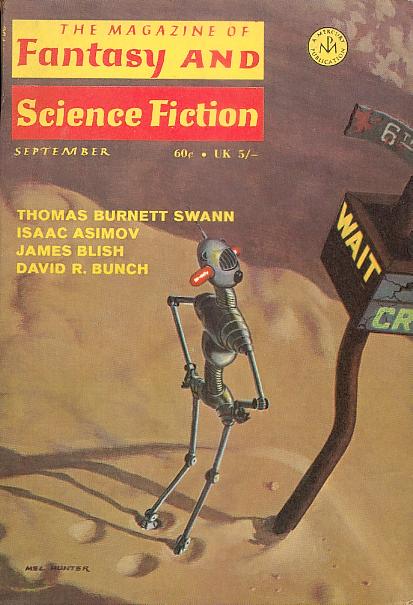
by Mel Hunter
The Travelin' Man, by Leo P. Kelley
Childy is a mother in a time where being a mom can be a crime. She has exceeded her child quota by six, and though she hides the extra kids when strangers come around, her deceptions can only be so artful in the face of determined government investigation.
In this case, she is tripped up by a traveling Bible salesman, who subtly encourages Childy to log the birthdates and names of her children in its frontispiece. When the purveyor of the Good Book returns a month later, his affability is gone, replaced with a pitiless demeanor and a cruel mission.
This is a harsh, pastoral piece in a style that was more common for F&SF in the '50s, perhaps. Not much new is said, but the saying is competently done.
Three stars.

Blish, perhaps the book reviewer with whom I resonate least, offers up praise for the latest Jerome Branch Cabell reprint, The High Place, indifference for Howard Fast's collection of fantasies, The General Zapped an Angel, enthusiasm for Harrison's anthology Nova 1 (better than Orbit, he feels), and mild disappointment in the quality to value ratio of the themed anthology, Crime Prevention in the 30th Century.
Rings on Her Fingers, by William Walling
Peace negotiations with the Llanasan Hegemony are going poorly. The aliens are touchy about how the humans have treated their Prisoners of War, who invariably sicken and die horribly in captivity. Moreover, all of the Llanasans tend toward increased agitation during the peace talks, individual aliens having to leave the room in the middle of discussions, to be replaced by fresh colleagues.
One xenobiologist figures out the key to the aliens' strange behavior, and given that we're in the modern year of 1970, sex is involved.
I found this tale rather silly, though it is played straight, and somehow difficult to get into. The Llanasans suffer from being at once too human and insufficiently so.
Two stars.
Reward of Virtue, by L. Sprague de Camp
Cute doggerel about a knight who despairs for want of a dragon, but when the Lord grants him one, it's not the dragon he expected or wanted.
Three stars.
Landed Minority, by Pamela Sargent
In 1978, a plague devastates the population of the Earth, and civilization is confined to a few figurative oases. One of them is a State University, where the student body has been reduced to just a few dozen. One of them, a young woman named Marina, is frustrated by the decreasing intellectuality of her classes—and her colleagues and professors. It turns out that the plague has a second, more insidious effect.
This is a nice bit of horror from a brand new author. If you like your after-the-End stories particularly bleak, this one's for you.
Three stars.
Films: Beneath the Planet of the Apes, by Baird Searles
Searles didn't like the new "Apes" movie any better than Jason Sacks did when he reviewed it. It's a good critique, though.
Life stinks, and then you die. No SF or F in this story. Just a lot of cynicism and some precious, overly affected wordplay.
One star.
The Goat Without Horns (Part 2 of 2), by Thomas Burnett Swann

And now, the thrilling conclusion of the two-part serial begun last month. The pace picks up, and things get much more fantastical on the Caribbean island of Oleandra, where Charlie the sensitive British young man has traveled to tutor the tomboyish Jill, but has ended up in the bed of her mother, Elizabeth. This time, we learn that the local Carib chief, Tark, handsome and fierce, is actually Jill's father. It is he who asked for Charlie to be sent to Oleandra—to marry Jill and make her with child.
This where the fantastic element of the story really enters the equation, as Tark not only has power over the local sharks; he seems to share a direct kinship with them. These abilities seem to be inheritable. Thus, the purpose of Tark's not precisely evil but definitely amoral plan. But the chief did not reckon on the resourcefulness of Charlie's best friend, the plucky and romantic dolphin, Gloomer…
Porpoises do seem to be all the rage these days, don't they? Even author Swann has been infected by the Flipper bug, casting a brilliant harlequin of the deep as the story's narrator (a conceit that is not entirely convincing, as Gloomer keeps fading away and returning as a character as convenient rather than realistic). The action is fast and furious, however, and the interpersonal relationships are nicely developed. I'd say this half of the book earns a breezy four stars, which makes the whole affair clock in at 3.5.
The Lopsided Sun, by Isaac Asimov

I quite enjoyed this science factual explanation of sunspots, though the good Doctor's attempt to tie in the possible planetary effects on the Sun's storms with his savaging of astrology (begun last month) is a bit weakly done.
Four stars.
The Ultimate Thrill, by Albert Teichner
A Parisian hypnotist is purveying immortality, one mesmerization at a time. The fee is hefty, and only a dozen or so of the world's rich can afford it. When the hypnotist overdoses on his own medicine, this leaves a clutch of quickly aging tycoons, desperate to recover the fountain of youth before it's too late.
Pleasant enough reading, but it plows no new ground. Three stars.
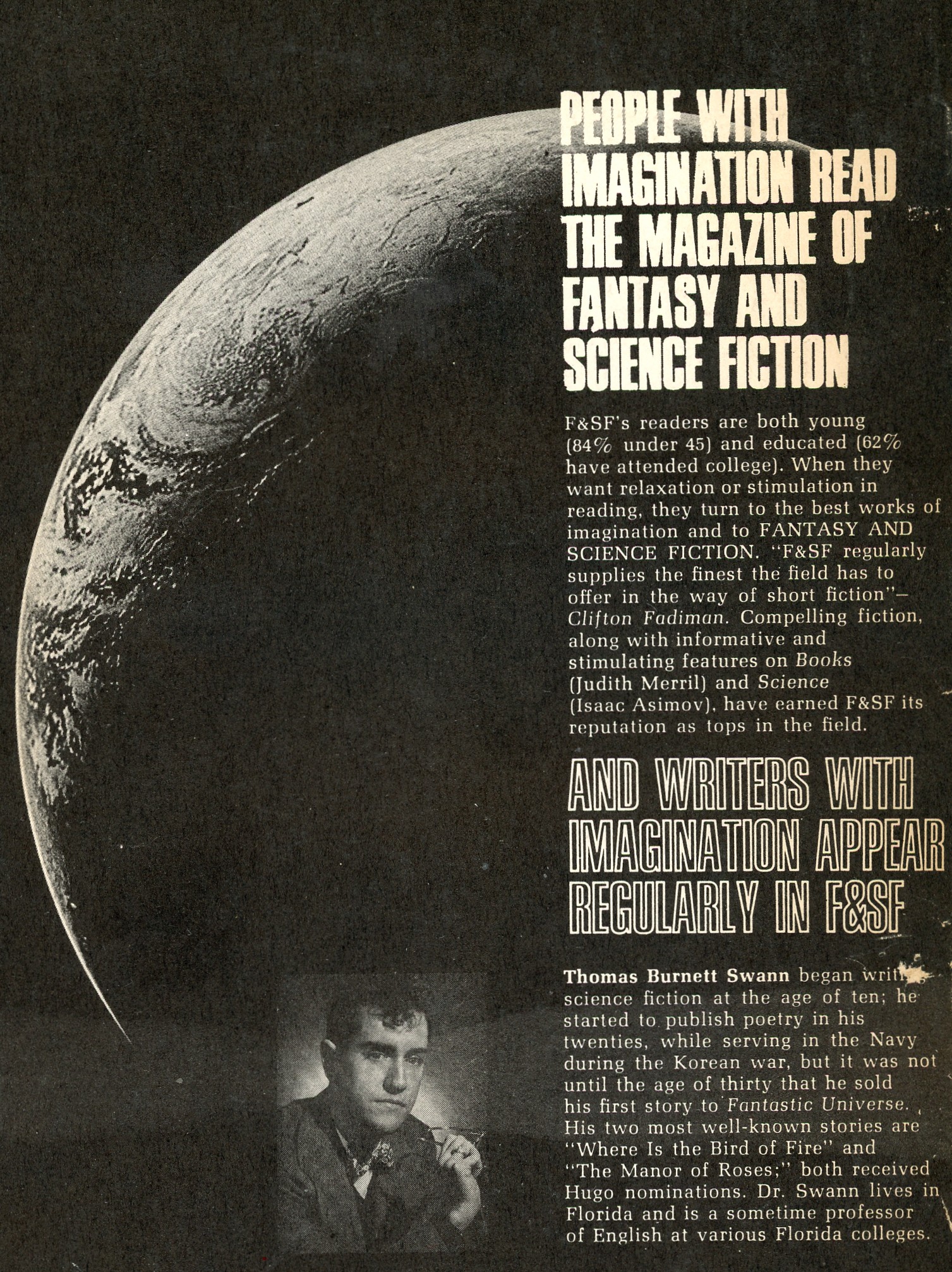
Leviathan!, by Larry Niven
Technically, this should have been appended to last month's article, but I just read it today. This story, the sequel to Get a Horse! (October 1969 F&SF), appeared in the August 1970 Playboy of all places! Since we no longer have a regular Playboy reviewer, I figured here is as good a place as any to review the story.
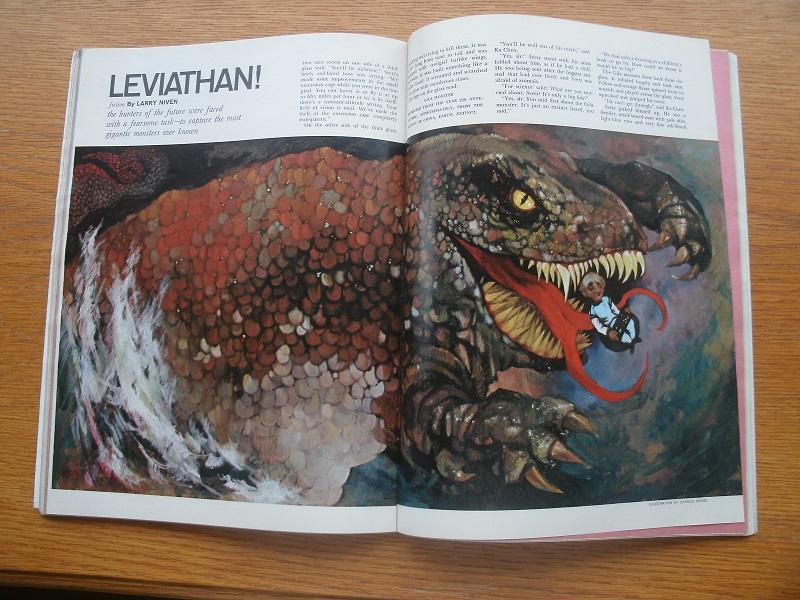
We last saw Svetz the time traveler in Get a horse!, wherein the cowardly chrononaut was dispatched from the polluted and animal-less 30th Century to recover an equine example from the Middle Ages. Instead, he brought back a unicorn.
This time, Svetz is sent to the 19th century to catch bigger fish, literally—his target being the Biblical "leviathan". And boy, does he find it!
I love Niven's fusion of science and fantasy in these tales, and the characters are just the right degree of ridiculous without being implausible. I'm surprised Playboy wanted this piece, a sexless story, and a sequel to boot, but I'm sure Larry's not complaining about the size of the acceptance check! (Not that he needs the money…)
Four stars.
Out of Tune(s)
All in all, not a particularly auspicious issue of an increasingly variable magazine. It's like listening to the latest album of a prolific, once-brilliant artist. The tunes are still done in a familiar style, but they're getting stale and only seem to point up how good the music once was.
Well, if Dion (1961's The Wanderer), of all singers, can make a comeback (q.v. 1968's Abraham, Martin, and John), surely F&SF can do it. Right?
Let's hope.
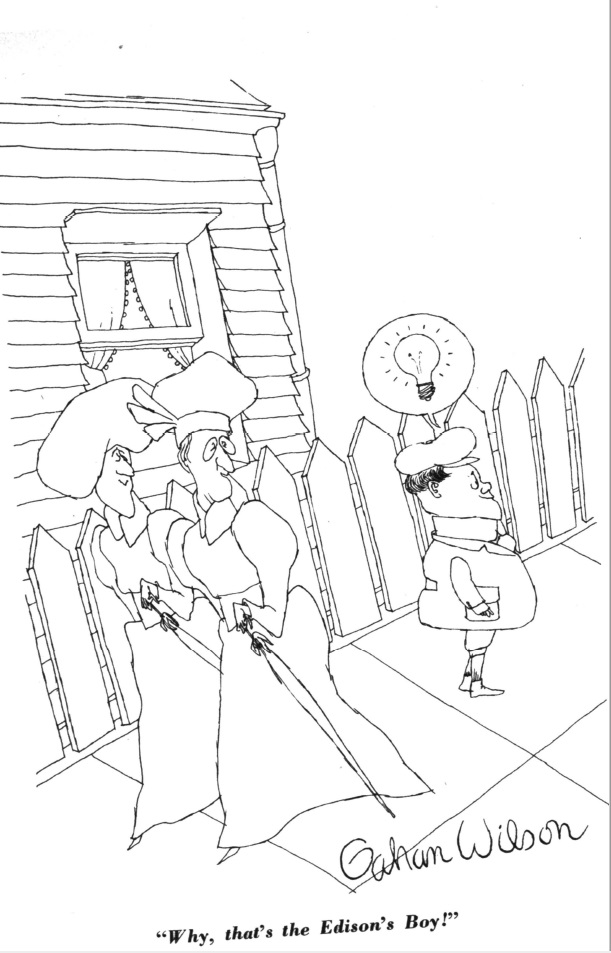
by Gahan Wilson
[New to the Journey? Read this for a brief introduction!]



